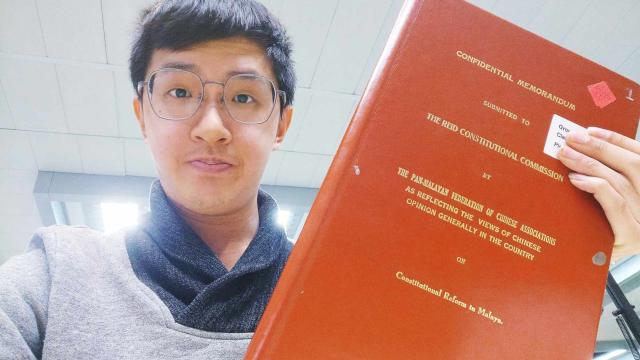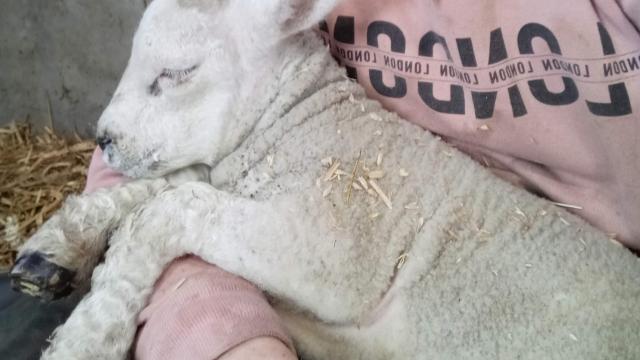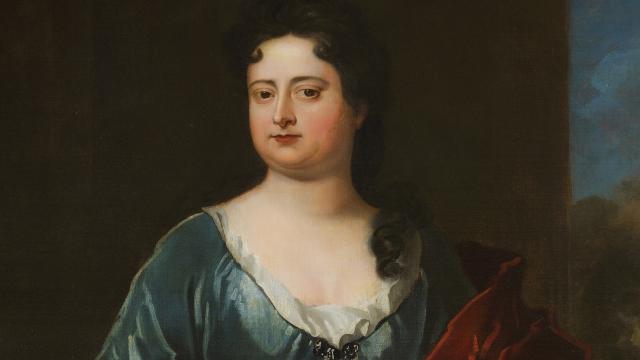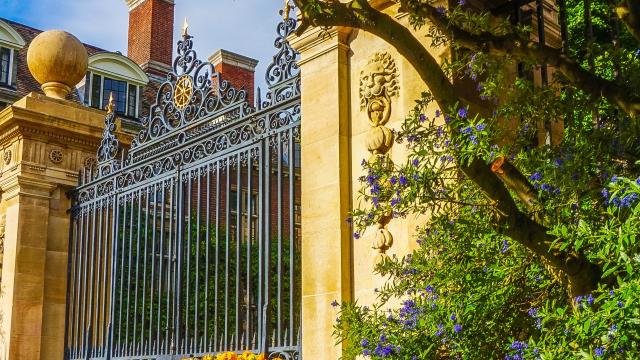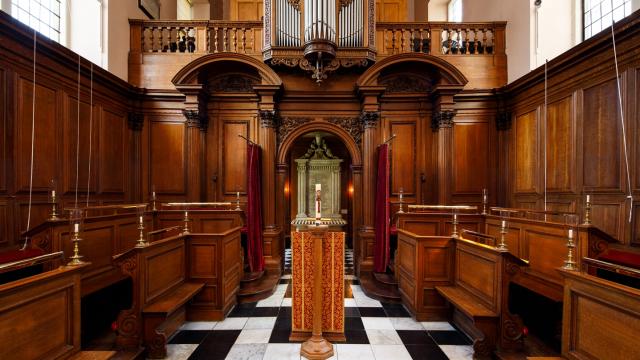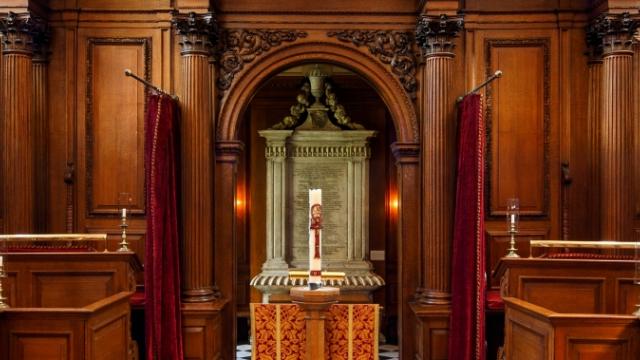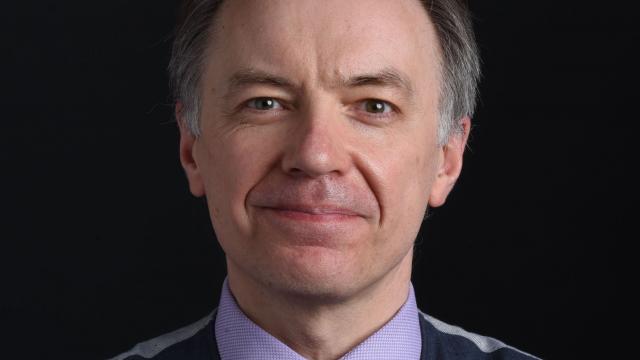
A seminar on the ‘Legacies of Enslavement’ was held on 16 January 2020 where we presented the outcomes of recent research projects investigating the links between St Catharine’s and the slave trade. The event provided a forum for starting to explore not only further topics that future research could address, but also how the College community can continue to take meaningful steps to rediscover, acknowledge and learn from its past and how it has been represented.
The event proved to be engaging, honest and thought-provoking for us (as presenters), other students, Fellows, staff and invited guests – and we were pleased to have the opportunity to share our findings after so many weeks of research. We have developed this summary of the presentations and accompanying discussions to support ongoing dialogue about the legacies of enslavement, and to inspire action by St Catharine’s and other similar institutions.
Yamini Cinamon Nair (2016, Geography)
Rohan Montgomery (2017, History)
Isabel Noble (2015, Modern and Medieval Languages)
L’myah Ross-Walcott (2018, International Relations and Politics)
Background to our research
In April 2019, Professor Stephen J Toope, Vice-Chancellor of the University of Cambridge, announced a two-year inquiry into the ways in which the University contributed to, benefited from or challenged the Atlantic slave trade and other forms of coerced labour during the colonial era.
By May 2019, St Catharine’s had established and soon after announced the provenance of the bell by its main entrance. Following consultation, the bell was removed from its prominent position ahead of delivery to the Rijksmuseum in Amsterdam for display as part of an upcoming exhibition focused on slavery. In addition, the bell was made a focus for honest discussion and reflection about the College’s historical links with slavery. To begin the process of understanding more about our heritage and how this has been represented, the College created bursaries to enable four students to undertake research projects.
Our different areas of focus for the four research projects were largely influenced by our academic studies (spanning history, geography, languages, international relations and politics) as well as personal interest in issues surrounding race and equality. We conducted most of our research activities during the summer of 2019 and prepared our findings for presentation during late 2019 and January 2020.
Welcoming attendees to the seminar
Dr Miranda Griffin, as Senior Tutor and coordinator of the research projects, opened the event by welcoming the 70 attendees present and reminding us of the background to our research projects. She dedicated the seminar to two groups of people: “The St Catharine’s community – the people in this room, and also the people who have attended, taught, worked at this college in the past, and who will do so in the future. And, more importantly, the much larger group of people – the men, women and children who were deprived of their liberty, rights, identities, even often their names. People very often lost to historical record. People who were – and people who still are – enslaved.”
Dr Griffin outlined the programme and invited everyone present to participate in the scheduled discussion session by making bold suggestions on the future direction of the College’s activities on the legacies of enslavement (an invitation which still stands for every member of our community, past and present).
Human connections, parallel histories
Both Rohan and Isabel’s research investigated the ways in which St Catharine’s was directly connected to and benefited from the slave trade. As Isabel was unfortunately unable to attend the seminar, Rohan presented their findings by telling the College’s history through the stories of individuals who participated in both the College and slavery. He proposed that such stories help us to confront our past and ultimately move forward in tackling these legacies.
Isabel’s work focused on two case studies: an alumnus involved in the transatlantic slave trade during the 17th century and another involved in the abolition movement in the 19th century:
John Cutts
Cutts was admitted to St Catharine’s in 1676 as a fee-paying Fellow Commoner and received an honorary degree in 1690. Evidence for his contributions to the College’s connections to the slave trade include:
- A £50 donation to the College between 1673 and 1704;
- A successful petition in 1696 to the King granting an estate with plantations in Barbados; and
- Wealth derived from generations of plantation owners passed to him through his marriage to Elizabeth Pickering in 1697.
John Charlesworth
In contrast, Charlesworth was admitted to St Catharine’s in 1816 as a sizar – a student originally financing his studies by undertaking menial tasks within his college. In addition to records showing that his father was an active abolitionist campaigner, Charlesworth himself was:
- Secretary of the Anti-Slavery Society in Ipswich from its inception in 1823;
- A passionate participant in Anti-Slavery meetings across south-eastern England; and
- An intimate friend and correspondent of leading abolitionist Thomas Clarkson.
Meanwhile, Rohan’s research identified (admittedly not large) amounts of money received by St Catharine’s from various students born on slave estates or in British slave societies to enter the College as late as the 1840s. He also traced how financial connections involved the personal finances of Fellows through the technically prohibited (and now defunct) practice of dividends being issued by the College’s leadership, whereby different fines and ad hoc sums received from scholars (including those with links to slavery) would be divided amongst the Master and Fellows.
Rohan’s research also explored alumni who engaged with slavery and colonial activities after leaving St Catharines, in particular links with the British East India Company, due to its significance in transporting slaves. For instance, three alumni were identified who contributed money to the College – through student fees or donations – with money earned from the Company. In addition, several students joined the Company after leaving St Catharine’s.
Investigating the first African and Caribbean students to matriculate at St Catharine’s
L’myah traced early members of the St Catharine’s community with African or Caribbean heritage by first reviewing matriculation photographs (produced for 1910 onwards) and then gathering resources about the lives of these students to determine their experiences of the legacies of enslavement. The 1914 matriculation photograph (reproduced below) and the College’s archive catalogue enabled the identification of the earliest students of African or Caribbean heritage.
Alfred Francis Adderley CBE (1912, Law)
Born in the Bahamas, Adderley is the first black student identified from the College’s archives. He served as a member of the House of Assembly, the Health Board and the Board of Education in the Bahamas. L’myah found that he retained a strong connection with St Catharine’s, with his son, his granddaughter and the Right Rev’d Michael Eldon among those whom he encouraged to study at the College. Adderley’s family history revealed a direct link with slavery: his great-grandfather was a former slave who became one of the wealthiest landowners in the Bahamas, and this inheritance enabled Adderley to study overseas at St Catharine’s.
Dr Cecil Belfield Clarke (1914, Natural Sciences)
Barbados-born Clarke practiced medicine in London for close to 50 years, where he was active in the West African Students’ Union, a founding member of the League of Coloured Peoples and a supporter of the International African Service Bureau. International leaders turned to him for medical advice, including George Padmore, and Clarke was appointed Senior Medical Officer for the Ghanaian government. When reviewing resources, L’myah identified repeated mentions of Clarke in relation to homosexuality (evidence did not indicate how Clarke described his own sexual orientation).
L’myah traced Adderley and Clarke to funds given to St Catharine’s to establish prizes still given students today (for outstanding performance in Law and Biological Natural Sciences, respectively). Their legacies are therefore shaping contemporary life at the College.
Thomas Hutton-Mills Jr (1914, Law)
The son of a prominent lawyer and politician, Hutton-Mills Jr was born in Ghana. After studying and practicing law, he became an early member of Kwame Nkrumah's Convention People's Party – a socialist political party that led the anti-colonial struggle culminating in independence for Ghana in 1957. He served Ghana as a member of the Legislative Assembly, Minister for Commerce Industry & Mines, Minister of Health & Labour, Deputy Commissioner and Ambassador to Liberia.
L’myah emphasised the importance of ensuring African and Caribbean students have agency in narratives constructed about the College’s past to support this group’s belonging and membership of the institution. She also suggested that St Catharine’s considers how activities could enhance the inclusion of students with this heritage.
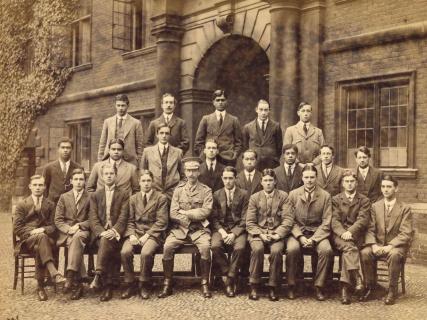
Image: The 1914 matriculation photograph for St Catharine’s College, including (back row, L–R) Davenport, S J; Boyce, A H; Choudhary, G C; Barker, R G; Brigley C G; (middle row, L–R) Clarke, C B; Bhaudari, C R; Benstead, C R; Thomas, J O; Lee, P S; Hutton-Mills, T; Smith, D G; Wasey, A; (front row, L–R) Stuart, J A G; Garson, W G; Grundy, J S; Gray, E J; Rushmore; Hughes, J B W; Brown, C L M; Howden, E R; Buck, S H; Storer, E W. (© Stearn and Sons/Lafayette Photography Ltd)
Ideological legacies: The roles of geographers at St Catharine’s in shaping twentieth century colonial thought
The final presentation considered how racial ideologies that justified the enslavement of millions of Africans did not decline after the Abolition Act was passed (1833), but continued through the colonial era. Yamini examined the role of the University of Cambridge, and specifically members of St Catharine’s College, in legitimising race-based thinking through its contributions to the Geographical Tripos curriculum from its beginnings a century ago to the 1960s.
St Catharine’s has been prominent in the study and teaching of Geography since the curriculum was established at the University of Cambridge in 1919 by Philip Lake, a geologist who worked for the Geological Survey in India, organised by the British East India Company. In the absence of evidence about the content of supervisions and lectures, Yamini began her presentation looking at departmental examination papers from the first part of the 20th century on Environment & Race, Races of Man, Anthropogeography and Human Geography. She drew attention to questions such as “Discuss the value of the colour of the skin in a classification of mankind” (1927) and “Write a defence of the institution of slavery” (1938).
During the early and middle parts of the 20th century, at least three St Catharine’s geographers – Steers, Caesar and Darby – were seminal to departmental teaching, to the extent that the College’s Geography Society is named for Steers. Yamini considered how their teaching legitimised certain ways of thinking among St Catharine’s students, citing examples such as the language used to describe “primitive peoples” by alumnus JS Hobbs (1934, Geography) in his series of school textbooks published in 1957–1960. Since then, she explained, key reforms to the Tripos may indicate a growing awareness of the problematic history of Geography, such as the phasing out of racial Geography and environmental determinism and the quantitative shift in Geography during decolonisation.
In addition, Yamini outlined how prevailing ideas of race can be seen to have influenced many geographers and other members of the College. She suggested that these ideas seem to have had some bearing on the lack of discussion of modern slavery and the history of enslavement within the wider College community, as indicated by the limited mentions of slavery in the Society magazine.
Ringing the changes: The future of the bell
The College’s Librarian, Dr Colin Higgins, thanked us for our research and set the scene for the discussion, as the Library is responsible for items of material heritage. He confirmed that the bell would form part of ‘Slavery, an exhibition’ at the Rijksmuseum, scheduled for 25 September 2020–17 January 2021, and that plans were underway to donate the bell to the Guyana National Museum. He read a brief statement about the exhibition from Eveline Sint Nicolaas, senior curator of history at the Rijksmuseum, and let us know that an invitation had been extended to her to visit St Catharine’s in Michaelmas Term 2020.
Discussion
Were significant methodological challenges encountered, such as gaps in the College’s archives?
For L’myah, matriculation photographs had some shortcomings, including time period covered (1910 onwards) and that not all students were captured (for example, Adderley did not appear in the 1912 photograph and could have been easily missed). In addition, gaps in primary evidence about the extracurricular participation of the three students raised questions about whether they were isolated from these activities or if these types of records tend to be incomplete.
Rohan noted that the College rarely held records about students after graduation during the period before abolition. To track students and their families, he turned to the ‘Legacies of British Slave-ownership’ database. He was also unable to easily determine opinions held on slavery, which would require further investigation of the signatories of petitions campaigning for or against slavery. He suggested personal/familial archives held outside of the College could support further study of the links between slavery and individuals connected with St Catharine’s.
Meanwhile, Yamini encountered fewer gaps because she was researching more recent history, although some individuals were hard to trace. She encouraged members of the community to update the College about their activities. Given the challenge of determining exactly what was taught by Fellows, she proposed that oral histories/in-depth qualitative research would be of value.
(Isabel was unable to participate in the discussion but notes that she encountered records in the College’s archive that often contained little more than the name of the donor and the amount received by St Catharine’s. Ascertaining the source of donors’ wealth required extensive research beyond the College’s own archives.)
What are the plans to publish the research findings?
Alongside this summary of the seminar’s presentations and discussions, Dr Griffin confirmed that each of our written reports would be available from the College’s library. L’myah advised that her research is still ongoing, as she seeks to expand upon the family histories of the students.
What was found about the experience of black and ethnic minority students before World War II?
Due to the richness of evidence about the three students from the 1910s, this later period was outside the focus of L’myah’s research project. However, it was agreed that there would likely be personal stories and shared experiences documented from the 1930s, and this could be a topic for future investigation.
How was suspicion about the bell’s origin raised?
While some at St Catharine’s were not aware of its provenance, certain assumptions had been made by others about the bell ever since the alumnus who gifted it (in the 1960s) reported finding it in the river bed of the Demerara River, Guyana. It was important for the College to research the bell’s past in 2019, Dr Griffin explained, in order to confirm the precise nature of the association with the slave trade.
A follow-up question asked if the plan for the bell to be donated to the Guyana National Museum was welcomed by Guyana. Professor Sir Mark Welland shared that, while exploratory conversations are ongoing with key figures such as the High Commissioner of Guyana, the initial proposal had been received positively.
Has the University of Cambridge engaged with St Catharine’s?
Dr Higgins confirmed that invitations to attend the seminar had been extended to all members of the University’s Advisory Group on Legacies of Enslavement. We were delighted that a representative for the Advisory Group was able to join us, who said they hoped that other colleges would engaged with the legacies of enslavement in a similar way. L’myah has engaged with the Advisory Group and hopes this will continue in 2020, including St Catharine’s supporting further investigations by the University’s two dedicated Research Fellows (Dr Sabine Cadeau and Nico Bell-Romero).
Closing remarks
Sir Mark concluded the seminar by thanking everyone for attending. He emphasised his pride in the students, Fellows and staff who came together during the research projects with the shared goal of understanding more about the legacies of enslavement. He described how the wealth of ideas raised during our presentations and the discussion session would fuel the next phase of the College’s activities on this challenging issue, which already includes supporting the Rijksmuseum exhibition.
Acknowledgements
During the seminar, we recognised the support and encouragement that we received from St Catharine’s and others throughout our research projects. In addition to the bursary funding received from the College, we want to acknowledge and thank (in no particular order):
- Dr Valentina Caldari, Director of Studies in History, St Catharine’s
- Dr Johnhenry Gonzalez, University Lecturer in Caribbean and Atlantic History since c. 1500, Faculty of History
- Dr Colin Higgins
- Dr Tilda Watson, Archivist, St Catharine’s
- Sarah Fletcher, Deputy Librarian, St Catharine’s
- Pauline Kiesow, Library Assistant, St Catharine’s
